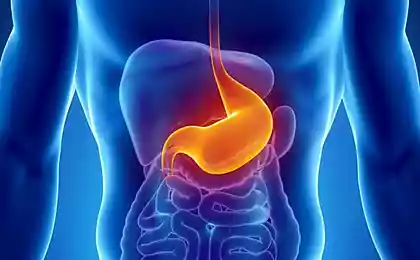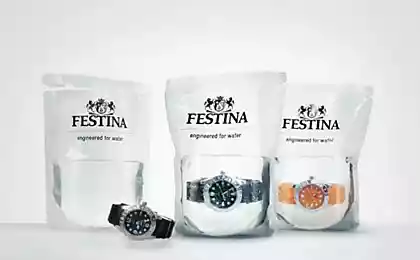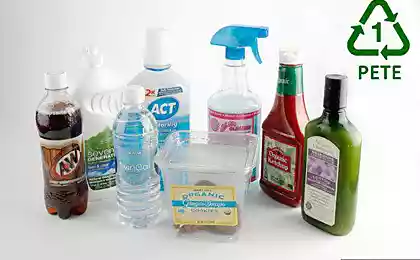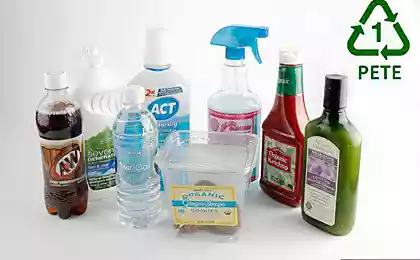525
Over 175 dangerous chemicals found in food packaging
A new study warns that some food packaging contain harmful chemicals related to cancer and infertility.
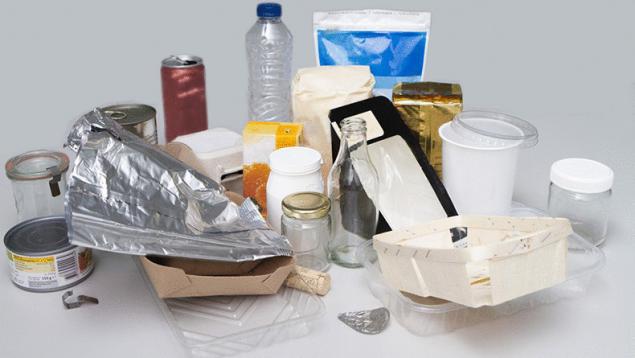
Scientists have discovered more than 170 dangerous chemicals are legally used in the production of packaging for food.
But the food standards Agency was quick to reassure consumers, explaining that all the food packaging comply with the European standards and the presence of chemical substances is not dangerous if used in the prescribed framework.
In a study published in the journal Food Additives and Contaminants ("Food additives and contaminants") are listed for about 175 chemicals with different effect. It was discovered substances, which negatively affect sperm production, cause birth defects of the genitals and affect the production of hormones in the body.
Managing Director of the Forum of Food Packaging Dr. Jane Mongke, who conducted the study, said: "Consumers, of course, it was unpleasant and surprising to learn that harmful chemicals are intentionally used in materials in contact with food".
A list of chemicals found in packaging and includes those that tend to accumulate in the environment and the human body. Phthalates, which are widely used as plasticizers, are examples of those substances that can cause male infertility and cancer.
Also found were benzophenone and ORGANOTIN compounds found in printing inks and coatings for food packaging.
The researchers found that some types of foil, cans, trays and containers for storage, allocate food in a small amount of harmful substances that enter the human body daily.
Dr. Munke said that most of the harmful chemicals identified in the study meet the criteria for "substances of concern" established by the REACH (Registration, evaluation, authorisation and restriction of chemicals).
Under European rules, chemicals that fall under this list, must be registered and approved for use, but the principles in this guide do not apply to food packaging.
Dr. Munke told the Daily Express: "REACH currently covers consumer products such as toys, but food is a little different. We believe that the list need to generalize, then we can control the use of chemicals, which makes the packaging of food products".
She added: "As a consequence, chemicals with highly toxic properties may legally be used in the production of materials in contact with food, but at the same time, they are banned in the production of other consumer goods such as computers, textiles and paints. Despite the fact that the impact of chemicals on food can be much more relevant".
The press Secretary of the food standards Agency assures that food packaging safe and meet European standards.
175 dangerous chemicals found in food packaging
Formaldehyde, piperonila butoxide, carbon tetrachloride, oxide tribution, tributylin acetate, propiolactone, caffeine, 4-Chloro-3-METHYLPHENOL,? phloretin, aniline, diethylsulfate, benzoic acid, N, N-dimethylformamide, benzene, cobalt acetate, diphenyl-p-phenylendiamin, chlorethylene, dichloromethane, formamide, carbon disulfide, ethylene oxide, methyloxirane, bisphenol B, dilaurate, dimethyl sulphate, isoprene, trichloroethylene, acrylamide, 2-nitropropane, bisphenol a, bisphenol S, 4-tert-pentylphenol, musk-ketone, DICYCLOHEXYL phthalate, difenilmetana, diethyl, calcium, dibutyl phthalate, phthalate dihexyl, benzylbutylphthalate, pentachlorophenol, 4-Chloro-3 ,5-dimethylphenol, 2-phenylphenol, quinoline, ethoxyquin, biphenyl, 4-phenylphenol, 4,4-biphenol, 4-nitrobiphenyl, propylparaben, benzyl paraben, butylparaben, 4-methyl-m-phenylendiamin, styrene oxide, 1,2,3-trichloropropane, ethylene thiourea, dichlorophen, 4-tert-butylpyrocatechol, 4-tert-butylphenol, methyl paraben, 4-hydroxyacetophenone, 4-hydroxybenzoic acid, styrene, 4,4 ‘-methylene-bis [2-Chloroaniline], 4,4 ‘-methylendianiline, performativa acid, salt of ammonium, β-carotene, aluminum, manganese (nanoparticles), sodium perchlorate, peroxometaborate sodium, ammonia, sodium fluoride, potassium bromate, copper sulfate, sodium chromate, potassium dichromate, potassium perchlorate, hydrogen sulfide, petrolatum, extract of hops, naphtha, naphtha 4-(1,1,3,3-TETRAMETHYLBUTYL)-phenyl-polyethylene glycol, Nonylphenol (ethoxycarbonyl), aluminum sulfate, boric acid, chlorine dioxide, 4-benzyloxyphenol, di (2-ethylhexyl) adipate, 4-Nonylphenol, p-cresol, 1-chloro-2 ,3-epoxypropane, buta-1,3-diene, 1,2-dichloroethane, Acrylonitrile, ethylene glycol, chloromethyl-methyl ether, vinyl acetate, 1,3-dihydroxybenzene, melamine, toluene, phenol, 2-methoxyethanol, n-hexane, 2-ethoxyethanol, 2-ethoxyethyl acetate, 2-(2-aminoethyl-amino) ethanol, triphenyl, and Tris(2-chloroethyl)-phosphate, bis(2-ethylhexyl) phthalate, dioctylphthalate, phenyl salicylate, chloranil, benzophenone, ethyl, catechol, 2,3-epoxypropyl phenyl ether, 4-ethylphenol, hydroquinone, diazen-1,2-dicarboxamide, diphenol acid, 2-chlorobutane-1,3-diene, perchloroethylene, 2,4-dihydroxybenzophenone, benzophenone-3; oxybenzone, 2-naphthol, resorcinol monobenzoate, thiram, Zir, sodium methyl-dithiocarbamate, 4 — (1,1,3,3-Tetra-methylbutyl) phenol, nabam, 2-ethylhexanoate acid, ethylenimine, hydrazine, hesperetin, 4,4 ‘-dihydroxy-benzophenone, 3-ethylphenol, Bisphenol F, carbon monoxide, 4-n-propylene, dibutylamino dichloride, N-methyl-2-pyrrolidone, 4-cyclohexylphenol, disodium tetraborate, decahydrate, antimony trioxide, xylene, disodium tetraborate (anhydrous), asbestos, sodium polysulfide, tributyltinchloride, bisphenol diglycidylether, 4-Op, Tris (2,3-epoxypropyl) isocyanurate chloride 2,3-epoxypropyl-trimethylammonium, triclosan, oxine-copper, carbendazim, crocidolite, chrysotile, zineb, IABR; celestoide, 2-octyl-(4-dimethyl-amino) benzoic acid, tert-butylhydroxyanisole, Nonylphenol, 2,3,4,5-tetrachlorophenol, 4-Nonylphenol (ethoxycarbonyl), diisodecylphthalate (1,1,3,3-tetramethyl-butyl) phenol, diisononylphthalate, deltamethrin, chlorinated paraffins, diisononylphthalate.
Source: mixednews.ru/archives/61335

Scientists have discovered more than 170 dangerous chemicals are legally used in the production of packaging for food.
But the food standards Agency was quick to reassure consumers, explaining that all the food packaging comply with the European standards and the presence of chemical substances is not dangerous if used in the prescribed framework.
In a study published in the journal Food Additives and Contaminants ("Food additives and contaminants") are listed for about 175 chemicals with different effect. It was discovered substances, which negatively affect sperm production, cause birth defects of the genitals and affect the production of hormones in the body.
Managing Director of the Forum of Food Packaging Dr. Jane Mongke, who conducted the study, said: "Consumers, of course, it was unpleasant and surprising to learn that harmful chemicals are intentionally used in materials in contact with food".
A list of chemicals found in packaging and includes those that tend to accumulate in the environment and the human body. Phthalates, which are widely used as plasticizers, are examples of those substances that can cause male infertility and cancer.
Also found were benzophenone and ORGANOTIN compounds found in printing inks and coatings for food packaging.
The researchers found that some types of foil, cans, trays and containers for storage, allocate food in a small amount of harmful substances that enter the human body daily.
Dr. Munke said that most of the harmful chemicals identified in the study meet the criteria for "substances of concern" established by the REACH (Registration, evaluation, authorisation and restriction of chemicals).
Under European rules, chemicals that fall under this list, must be registered and approved for use, but the principles in this guide do not apply to food packaging.
Dr. Munke told the Daily Express: "REACH currently covers consumer products such as toys, but food is a little different. We believe that the list need to generalize, then we can control the use of chemicals, which makes the packaging of food products".
She added: "As a consequence, chemicals with highly toxic properties may legally be used in the production of materials in contact with food, but at the same time, they are banned in the production of other consumer goods such as computers, textiles and paints. Despite the fact that the impact of chemicals on food can be much more relevant".
The press Secretary of the food standards Agency assures that food packaging safe and meet European standards.
175 dangerous chemicals found in food packaging
Formaldehyde, piperonila butoxide, carbon tetrachloride, oxide tribution, tributylin acetate, propiolactone, caffeine, 4-Chloro-3-METHYLPHENOL,? phloretin, aniline, diethylsulfate, benzoic acid, N, N-dimethylformamide, benzene, cobalt acetate, diphenyl-p-phenylendiamin, chlorethylene, dichloromethane, formamide, carbon disulfide, ethylene oxide, methyloxirane, bisphenol B, dilaurate, dimethyl sulphate, isoprene, trichloroethylene, acrylamide, 2-nitropropane, bisphenol a, bisphenol S, 4-tert-pentylphenol, musk-ketone, DICYCLOHEXYL phthalate, difenilmetana, diethyl, calcium, dibutyl phthalate, phthalate dihexyl, benzylbutylphthalate, pentachlorophenol, 4-Chloro-3 ,5-dimethylphenol, 2-phenylphenol, quinoline, ethoxyquin, biphenyl, 4-phenylphenol, 4,4-biphenol, 4-nitrobiphenyl, propylparaben, benzyl paraben, butylparaben, 4-methyl-m-phenylendiamin, styrene oxide, 1,2,3-trichloropropane, ethylene thiourea, dichlorophen, 4-tert-butylpyrocatechol, 4-tert-butylphenol, methyl paraben, 4-hydroxyacetophenone, 4-hydroxybenzoic acid, styrene, 4,4 ‘-methylene-bis [2-Chloroaniline], 4,4 ‘-methylendianiline, performativa acid, salt of ammonium, β-carotene, aluminum, manganese (nanoparticles), sodium perchlorate, peroxometaborate sodium, ammonia, sodium fluoride, potassium bromate, copper sulfate, sodium chromate, potassium dichromate, potassium perchlorate, hydrogen sulfide, petrolatum, extract of hops, naphtha, naphtha 4-(1,1,3,3-TETRAMETHYLBUTYL)-phenyl-polyethylene glycol, Nonylphenol (ethoxycarbonyl), aluminum sulfate, boric acid, chlorine dioxide, 4-benzyloxyphenol, di (2-ethylhexyl) adipate, 4-Nonylphenol, p-cresol, 1-chloro-2 ,3-epoxypropane, buta-1,3-diene, 1,2-dichloroethane, Acrylonitrile, ethylene glycol, chloromethyl-methyl ether, vinyl acetate, 1,3-dihydroxybenzene, melamine, toluene, phenol, 2-methoxyethanol, n-hexane, 2-ethoxyethanol, 2-ethoxyethyl acetate, 2-(2-aminoethyl-amino) ethanol, triphenyl, and Tris(2-chloroethyl)-phosphate, bis(2-ethylhexyl) phthalate, dioctylphthalate, phenyl salicylate, chloranil, benzophenone, ethyl, catechol, 2,3-epoxypropyl phenyl ether, 4-ethylphenol, hydroquinone, diazen-1,2-dicarboxamide, diphenol acid, 2-chlorobutane-1,3-diene, perchloroethylene, 2,4-dihydroxybenzophenone, benzophenone-3; oxybenzone, 2-naphthol, resorcinol monobenzoate, thiram, Zir, sodium methyl-dithiocarbamate, 4 — (1,1,3,3-Tetra-methylbutyl) phenol, nabam, 2-ethylhexanoate acid, ethylenimine, hydrazine, hesperetin, 4,4 ‘-dihydroxy-benzophenone, 3-ethylphenol, Bisphenol F, carbon monoxide, 4-n-propylene, dibutylamino dichloride, N-methyl-2-pyrrolidone, 4-cyclohexylphenol, disodium tetraborate, decahydrate, antimony trioxide, xylene, disodium tetraborate (anhydrous), asbestos, sodium polysulfide, tributyltinchloride, bisphenol diglycidylether, 4-Op, Tris (2,3-epoxypropyl) isocyanurate chloride 2,3-epoxypropyl-trimethylammonium, triclosan, oxine-copper, carbendazim, crocidolite, chrysotile, zineb, IABR; celestoide, 2-octyl-(4-dimethyl-amino) benzoic acid, tert-butylhydroxyanisole, Nonylphenol, 2,3,4,5-tetrachlorophenol, 4-Nonylphenol (ethoxycarbonyl), diisodecylphthalate (1,1,3,3-tetramethyl-butyl) phenol, diisononylphthalate, deltamethrin, chlorinated paraffins, diisononylphthalate.
Source: mixednews.ru/archives/61335
What now happened to the country houses of Russian aristocrats
All about the dangers of abandonment of carbohydrates in the diet











